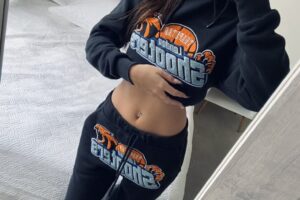The global sports balls market is expected to experience significant growth in the coming years, driven by increasing participation in sports, rising demand for advanced sports accessories, and technological innovations across various sports ball categories. According to a new report from The Insight Partners, the market is set to expand at a notable compound annual growth rate (CAGR), with key drivers including product innovations, eco-conscious initiatives, and customized offerings.
Expanding Global Market with Key Sports Segments
The global sports balls market has witnessed impressive growth over the past two decades. Sports balls for soccer, basketball, tennis, and cricket have emerged as key segments, thanks to the increasing number of recreational players, youth leagues, and professional sporting events. The market is expected to continue to grow as sports remain an integral part of international culture, fostering demand for high-quality, durable, and performance-enhancing products.
Among the primary drivers of this market expansion are technological advancements in ball design, including enhanced aerodynamics, moisture-wicking materials, and eco-friendly production techniques. As these technologies evolve, leading brands are focused on pushing boundaries to provide products that cater to both professional athletes and amateur sports enthusiasts.
Key Trends and Growth Strategies in the Sports Balls Market
According to The Insight Partners, several trends are poised to shape the future of the sports balls industry:
- Product Innovation and Performance Enhancement
Technological advancements continue to play a critical role in the development of sports balls. From seamless design to the use of advanced rubber compounds, leading manufacturers like Nike, Adidas, and Wilson are enhancing product durability and performance. Innovations such as Thermo Bonding in soccer balls for better water resistance, or moisture-wicking coatings for basketballs and tennis balls, are expected to drive market demand. - Sustainability and Eco-Friendly Manufacturing
Environmental concerns are pushing sports ball manufacturers toward sustainability. Recycled rubber, organic leather, and biodegradable plastics are becoming key components in the production of sports balls. Notable players such as Puma and Nike are leading the charge with eco-conscious product lines, which resonate well with the growing segment of environmentally aware consumers. - Customization and Personalization of Sports Balls
With the increasing demand for personalized products, sports balls that feature custom logos, player names, and team colors are seeing strong consumer interest. The Insight Partners predicts that customization will play an important role in driving the consumer experience, particularly among amateur athletes and fan markets. Nike and Adidas have capitalized on this trend, offering customized footballs, basketballs, and other sport-specific balls to cater to individual preferences. - Strategic Partnerships and Sponsorships with Major Leagues
Partnerships with top sports leagues and endorsement deals with professional athletes are a critical strategy for increasing brand recognition and market share. For instance, Adidas is the official supplier of the FIFA World Cup soccer ball, while Wilson provides the official basketballs for the NBA. These sponsorships not only provide increased visibility but also open up opportunities to connect with sports enthusiasts globally.
Leading Players in the Sports Balls Market
The competitive landscape of the sports balls market is characterized by the presence of both established players and emerging brands. Some of the major companies shaping the market include:
- Nike, Inc. – Known for its innovative designs and strong brand recognition, Nike remains one of the dominant forces in the global sports balls market.
- Adidas AG – Renowned for its soccer balls, Adidas continues to innovate with advanced technologies such as seamless construction and high-performance match balls.
- Wilson Sporting Goods – A leader in the tennis, baseball, and basketball segments, Wilson remains a trusted brand for professional athletes and enthusiasts alike.
- Spalding – Popular for its basketballs, Spalding’s long-standing partnership with the NBA reinforces its market leadership.
- Puma – Known for combining performance with fashion, Puma’s focus on eco-friendly products and strategic partnerships with top football clubs has strengthened its market position.
These companies are driving product innovation, investing in sustainability initiatives, and capitalizing on high-profile sports sponsorships to secure their positions in the market.
Emerging Markets: A Growing Consumer Base
The sports balls market is witnessing rapid growth in emerging markets such as Asia-Pacific, Latin America, and Africa, where increased interest in sports, particularly soccer, basketball, and cricket, is driving demand. With a growing middle class and a young, sports-driven population, these regions are expected to become significant players in the global market. As disposable incomes rise and the popularity of sports continues to grow, manufacturers are keen to localize their offerings and cater to the specific needs of these regions.
Market Forecast: Positive Outlook for the Sports Balls Industry
The Insight Partners’ research indicates that the sports balls market will maintain a robust growth trajectory, driven by rising consumer demand, technological advancements, and eco-friendly innovations. With an expanding global audience and continued investment in product innovation, the industry is expected to continue evolving, offering new opportunities for consumers and brands alike.
Get Sample PDF- https://www.theinsightpartners.com/sample/TIPRE00024630 /
Conclusion
The sports balls industry is growing increasingly, fueled by technological innovations, green initiatives, and a growing world-wide demand for sports. Firms are utilizing strategic growth strategies like product innovation, customization, and environmentalism to stay ahead of the competition. With the likes of Nike, Adidas, Wilson, and Spalding taking the lead, the sports balls industry is poised to keep its growth momentum going, supporting various market segments and global sports enthusiasts.
As sport remains a major part of international culture, the market for sports balls has the potential to continue prospering, presenting new opportunities for consumers and producers alike.

